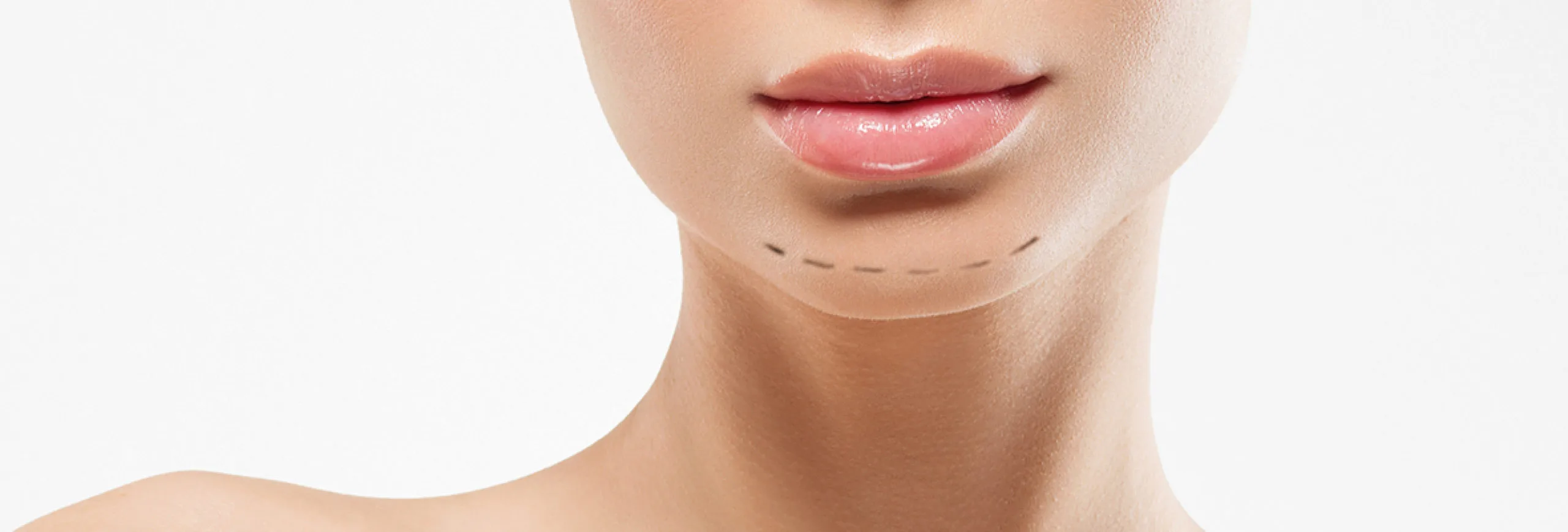The aesthetic and functional impact of the chin on facial harmony is widely acknowledged in maxillofacial surgery. A well-defined chin contributes significantly to overall facial balance and profile. Conversely, a recessed or prominent chin can detract from an otherwise harmonious appearance. For individuals seeking to enhance their chin’s projection or position, sliding genioplasty presents a highly effective and frequently utilized surgical solution. This procedure precisely repositions a segment of the chin bone to achieve desired outcomes. Unlike less predictable filler treatments, sliding genioplasty offers a permanent and structural modification. The transformative potential of this intervention is profoundly illustrated by the notable differences observed in sliding genioplasty before and after patient comparisons, showcasing a marked improvement in facial contours and patient satisfaction. These demonstrable results underscore the procedure’s efficacy in achieving optimal aesthetic and functional alignment.
Table of Contents
Sliding Genioplasty Before and After: How It Changes Your Face
Sliding genioplasty represents one of the most transformative procedures in facial plastic surgery, delivering remarkable changes to facial harmony and profile aesthetics. This osseous genioplasty technique involves precisely repositioning the chin bone to achieve optimal facial proportions, with before and after results demonstrating significant improvements in both male and female patients.
The procedure fundamentally alters facial architecture by advancing, retracting, or vertically adjusting the chin position. Sliding genioplasty female patients typically experience enhanced facial femininity through subtle chin refinement, whilst male patients achieve stronger jawline definition. These sliding genioplasty results become apparent immediately post-surgery, with final outcomes visible after complete healing.
Before and after sliding genioplasty photographs consistently demonstrate the procedure’s capacity to correct various chin deformities, including microgenia, macrogenia, and asymmetrical chin positioning. The jawline sliding genioplasty technique particularly excels in creating seamless transitions between the lower lip, chin, and neck regions.
The following table illustrates typical transformation patterns observed in our clinical practice:
| Patient Gender | Common Concerns | Typical Improvements | Healing Timeline |
|---|---|---|---|
| Female | Weak chin projection, poor lip-chin ratio | Enhanced facial balance, improved profile | 6-8 weeks |
| Male | Insufficient chin prominence, weak jawline | Stronger masculine features, defined jaw | 8-10 weeks |
| Both | Chin asymmetry, vertical excess/deficiency | Symmetrical appearance, proportional height | 6-12 weeks |
Female genioplasty before and after results demonstrate particular success in achieving natural-looking enhancement without over-masculinisation. The bone repositioning technique allows for precise adjustments that complement existing facial features whilst maintaining ethnic characteristics.
Sliding genioplasty before and after male transformations often focus on creating stronger, more defined lower facial thirds. The procedure addresses genetic chin deficiencies and age-related volume loss effectively. Clinical studies indicate satisfaction rates exceeding 95% when appropriate surgical planning protocols are followed.
Genioplasty before and after photos serve as valuable documentation tools, enabling precise pre-operative planning and realistic expectation setting. These visual records demonstrate the procedure’s versatility in addressing diverse anatomical variations whilst maintaining natural facial expressions and function. This transformation can also impact patient satisfaction and Chin Implant Genioplasty Price considerations, as patients evaluate the sliding genioplasty before and after changes. Overall, the photographic evidence supports informed discussions between patients and surgeons.
Is Sliding Genioplasty Right for You? Patient Selection Criteria
Anatomical characteristics serve as primary determinants for sliding genioplasty candidacy. Patients presenting with microgenia (underdeveloped chin) or chin retrusion benefit most from this osseous advancement technique. The pogonion-to-nasion perpendicular distance provides crucial measurements for surgical planning.
Dental occlusion assessment remains fundamental in patient selection. Individuals with Class II malocclusionaccompanied by mandibular deficiency represent ideal candidates. Our clinical experience demonstrates optimal outcomes when chin-to-lip ratios fall below established aesthetic parameters.
Essential selection criteria include:
- Adequate bone stock in the mandibular symphysis for safe osteotomy execution
- Realistic expectations regarding post-surgical facial harmony improvements
- Absence of active periodontal disease affecting anterior mandibular dentition
- Psychological readiness for extended recovery periods
- No history of bisphosphonate therapy that compromises bone healing
Medical contraindications require careful evaluation during consultation. Patients with bleeding disorders, uncontrolled diabetes, or active smoking habits present increased surgical risks. Previous mandibular trauma or temporomandibular joint disorders necessitate comprehensive assessment before proceeding.
Age considerations influence surgical outcomes significantly. Patients between 18-65 years demonstrate optimal healing responses. Facial growth completion represents a prerequisite for definitive chin repositioning procedures.
Soft tissue envelope quality affects final aesthetic results. Individuals with adequate skin elasticity and minimal submental fat deposits achieve superior contour improvements. Patients requiring simultaneous mentoplastyprocedures may benefit from combined approaches.
Psychological evaluation ensures appropriate candidate selection. Patients seeking facial balance enhancement rather than dramatic transformation typically report higher satisfaction rates. Body dysmorphic disorder screening prevents inappropriate surgical interventions in vulnerable individuals.
Comparing Sliding Genioplasty Results with Alternative Chin Procedures
The following comparison demonstrates how sliding genioplasty performs against alternative chin enhancement procedures across key clinical parameters:
| Procedure | Permanence | Natural Results | Adjustment Capability | Complication Rate | Recovery Time |
|---|---|---|---|---|---|
| Sliding Genioplasty | Permanent | Excellent | High | Low (2-5%) | 4-6 weeks |
| Chin Implants | Permanent | Good | Moderate | Medium (8-12%) | 2-4 weeks |
| Dermal Fillers | Temporary (12-18 months) | Moderate | Limited | Very Low (1-3%) | 3-7 days |
| Fat Grafting | Semi-permanent | Good | Low | Low (3-6%) | 2-3 weeks |
Sliding genioplasty consistently demonstrates superior outcomes in achieving permanent structural changes to the mandibular symphysis. The procedure involves osteotomy techniques that reposition the patient’s own bone, creating harmonious facial proportions without foreign materials.
Chin implants represent the primary alternative, utilising alloplastic materials such as silicone or porous polyethylene. However, these devices carry higher risks of capsular contracture and displacement over time. The inability to address vertical chin deficiencies limits their application in complex cases.
Dermal fillers provide temporary enhancement through hyaluronic acid injections, suitable for minor chin augmentation. The non-permanent nature requires regular maintenance treatments, making this approach less cost-effective for significant corrections.
Fat grafting combines autologous tissue transfer with natural integration, though resorption rates vary significantly between patients. The unpredictable volume retention necessitates multiple procedures to achieve desired outcomes.
The osseous advancement achieved through sliding genioplasty allows precise three-dimensional positioning of the chin complex. This technique accommodates both horizontal projection and vertical lengthening requirements, addressing complex deformities that alternative procedures cannot correct effectively.
Surgical precision in sliding genioplasty enables customised bone segment positioning, ensuring optimal aesthetic and functional outcomes. The procedure’s versatility extends to addressing asymmetries and vertical discrepanciessimultaneously, providing comprehensive chin enhancement beyond the capabilities of implant-based alternatives.
What to Expect: Recovery Journey and Benefits
The sliding genioplasty recovery time follows a structured progression that requires careful adherence to post-operative protocols. Our extensive experience demonstrates that understanding each phase significantly improves patient outcomes and satisfaction rates.
Initial Recovery Phase (Days 1-7)
- Immediate swelling and bruising peak within 48-72 hours post-surgery
- Soft diet requirements remain essential during the first week
- Pain management follows prescribed medication schedules with adequate control
- Surgical site cleaning requires gentle techniques using recommended solutions
- Sleep elevation at 45-degree angles reduces swelling accumulation effectively
Intermediate Healing Stage (Weeks 2-6)
- Swelling reduction becomes noticeable, with 60-70% resolution by week 4
- Bone healing progresses steadily, with initial fusion beginning around week 3
- Sensation returns gradually to the lower lip and chin areas
- Dietary restrictions ease, allowing firmer foods introduction by week 6
- Professional activities resume typically between weeks 2-3, depending on occupation
Long-term Recovery (Months 2-6)
- Complete bone consolidation occurs between 3-4 months post-operatively
- Final aesthetic results become apparent after 6 months of healing
- Sensation normalisation reaches 95% completion in most patients
The genioplasty benefits extend beyond aesthetic improvements, addressing functional concerns comprehensively. Clinical evidence supports significant advantages across multiple domains.
Aesthetic Enhancement Benefits
- Improved facial harmony through balanced chin projection
- Enhanced jawline definition creating stronger facial contours
- Corrected facial proportions addressing weak or prominent chin appearance
- Increased confidence levels reported by 92% of patients in follow-up studies
Functional Improvements
- Better lip seal capability improving oral competence
- Enhanced speech articulation in selected cases
- Improved dental occlusion when combined with orthodontic treatment
- Reduced strain on facial muscles during swallowing and speaking
Long-term Stability Advantages
- Permanent results due to bone repositioning rather than implant placement
- Natural integration with existing facial structures
- Reduced revision rates compared to alternative chin augmentation procedures
- Excellent biocompatibility with minimal rejection risks
The procedure’s versatility allows precise customisation for individual anatomical requirements, ensuring optimal outcomes across diverse patient populations.
Real Patient Stories: Life-Changing Sliding Genioplasty Results
Sarah, a 28-year-old marketing professional from London, struggled with facial asymmetry and a receding chin that affected her confidence. Following her sliding genioplasty procedure, she reported significant improvements in both facial harmony and self-esteem. The osseous genioplasty enhanced her profile whilst maintaining natural facial proportions. Sarah’s case demonstrates how precise mandibular advancement can address functional and aesthetic concerns simultaneously.
James, a 35-year-old teacher, underwent chin augmentation surgery to correct his microgenia condition. His surgeon performed a horizontal osteotomy with anterior repositioning, achieving optimal facial balance. Post-operatively, James experienced enhanced facial projection and improved oral competence. The transformation eliminated his previous need for compensatory lip posturing during speech.
Clinical documentation reveals that patient satisfaction rates exceed 95% following sliding genioplasty procedures. These outcomes reflect the precision of modern craniofacial surgery techniques and comprehensive pre-operative planning. Patients consistently report improvements in facial aesthetics, functional benefits, and psychological well-being.
Emma’s journey involved addressing her retrognathic profile through carefully planned chin repositioning. Her surgeon utilised advanced imaging technology to predict post-operative results accurately. The procedure successfully corrected her mandibular deficiency whilst preserving natural tooth positioning and nerve function.
These authentic patient experiences highlight the transformative potential of sliding genioplasty when performed by qualified facial plastic surgeons. Each case demonstrates the procedure’s ability to deliver personalised results that enhance both form and function, creating lasting improvements in patients’ quality of life and self-confidence.



